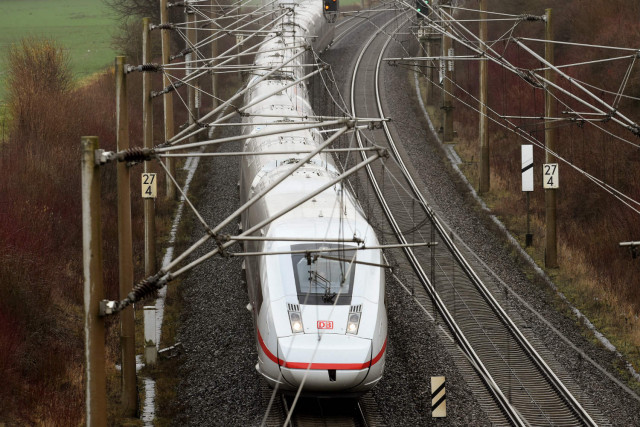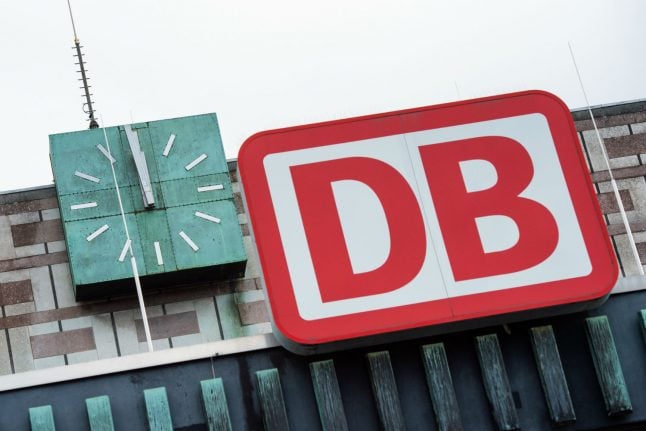It is not just Deutsche Bahn passengers but also the Federal Government itself who are demanding that the Bahn service must improve.
The state-owned company says it's been working on this, and that long-distance trains already arrived slightly more punctually this May.
Compared to April, punctuality increased by 1.1%. The Deutsche Bahn group considers all trains which arrive within six minutes of the scheduled arrival time to be ‘punctual.’
On top of this, Deutsche Bahn will completely renovate two important high-speed rail tracks in the coming weeks, and have promised that their trains will become significantly more environmentally-friendly in the next few years.
SEE ALSO: How Deutsche Bahn plans to improve its service and staffing in 2019
In the past month, 79.8 percent of long-distance trains arrived on time, the company stated. Every fifth ICE, Intercity or Eurocity train still arrived late, but this marks the best results for the company in seven years. Up to this point in the year, Deutsche Bahn has managed to exceed its punctuality target goals.
Head of the company, Richard Lutz, spoke of pleasing progress but emphazised that, “we will only be satisfied when we can stabilize this trend. For us this means a fight to ensure we lose no more minutes.”
Improved high-speed connections
Outdated infrastructure is one reason for a lot of delays but the group will now begin to renovate both of its first high-speed rail tracks.
Nearly 30 years after the launch of first ICE routes, Hanover-Würzburg and Mannheim-Stuttgart, Deutsche Bahn will undertake a complete renovation of these connections. From Tuesday of the coming week until December 14th the Hanover-Göttingen route will be closed.

A train along the Hanover-Würzburg route. Photo: DPA
ICE-passengers travelling between North and South Germany, as well as Berlin and Frankfurt/Main, must prepare for 30 to 40 minutes longer journey times, which have already been incorporated into timetables.
The trains will continue to run along conventional routes whilst the renovations are completed, meaning there will be interruptions and adjustments.
The construction work will include adjustments to platforms, switches and gravel but also to overhead cables, as well as electricity and safety engineering. Deutsche Bahn has estimated that the costs of the construction works from Hannover to Göttingen will be €175 million.
Deutsche Bahn goes green
A further promise from the company is that climate protection will play a central role in Deutsche Bahn’s new strategy.
Following a query from DPA on Tuesday, a company representative stated that the transport minister Andreas Scheuer (CSU) can be depended upon to ensure that Deutsche Bahn will produce a programme as ambitious as it will be reliable.
This comment was a reaction to the minister’s previous statement that Deutsche Bahn plans to become fully dependent on green electricity.
Scheuer told the newspapers of the Funke media group that he had demanded that the Deutsche Bahn’s management swiftly produce a plan to ensure they can “switch to 100 percent green electricity twelve years earlier than planned, namely in 2038 rather than 2050.”
According to a Deutsche Bahn spokesperson, the Bahn’s executive board will present a new strategy to their advisory board in two weeks’ time.
“In any case, Deutsche Bahn will resolutely continue to build on uphold its leading environmental role,” he added. “Strengthening the tracks equates to active climate protection.”
By the end of this year, 60 percent of Deutsche Bahn’s electricity will be covered by renewable energies.
However, Green parliamentary representative Oliver Krische has criticized Scheuer’s claim as a “blunder.” In his view, the electrified routes could be adjusted to 100 percent green electricity before 2030.
“It is possible to get started with [switching to green energy] immediately but instead there are once more several un-binding goals which lie 20 years into the future.”
The problem is that too many routes have not been electrified at all and therefore diesel trains still have to be used.
FDP transport politician Torsten Herbst also criticized the renewables plan, calling it a form of political “actionism”.
“Deutsche Bahn, one of the largest electricity consumers in Germany, is particularly dependent on a reliable and affordable energy supply,” he said.



 Please whitelist us to continue reading.
Please whitelist us to continue reading.
Member comments